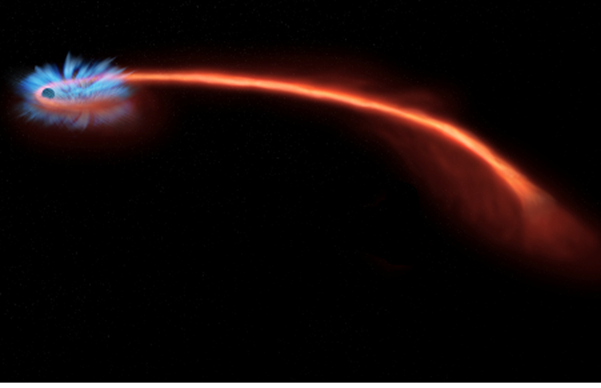A Star Shredded by a Black Hole
One of the craziest things a supermassive black hole can do is shred a star with its enormous tidal forces. The tidal disruption events are one of the very few ways astronomers know of the existence of supermassive black holes at the centers of galaxies and measure their properties.
Observations came from the 3-meter Shane telescope at Lick Observatory near San Jose, California, fitted with the Kast spectrograph that can determine the polarization of light over the entire optical spectrum. The light becomes polarized — its electrical field vibrates primarily in one direction — when it scatters off electrons in the gas cloud.
Patra, Filippenko, Lu and UC Berkeley researcher Thomas Brink, graduate student Sergiy Vasylyev and postdoctoral fellow Yi Yang reported their observations in a paper accepted for publication in the journal Monthly Notices of the Royal Astronomical Society. The researchers calculated that the polarized light was emitted from the surface of a spherical cloud with a radius of about 100 astronomical units (au), 100 times farther from the star than Earth is from the sun. An optical glow from hot gas emanated from a region at about 30 au.
Because these tidal disruptions occur so far away, in the centers of distant galaxies, they appear as only a point of light, and polarization is one of few indications of the shapes of objects. Given the distance, you can’t study the event’s geometry or the structure of these explosions. However, studying polarized light helps deduce some information about the distribution of the matter in that explosion or, in this case, how the gas — and possibly the accretion disk — around this black hole is shaped.

